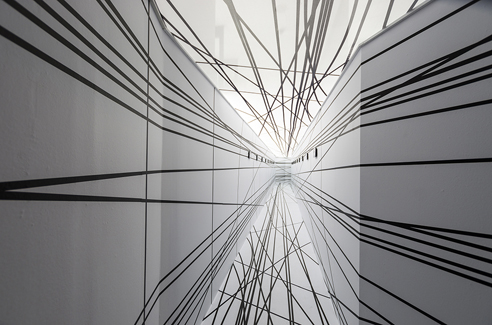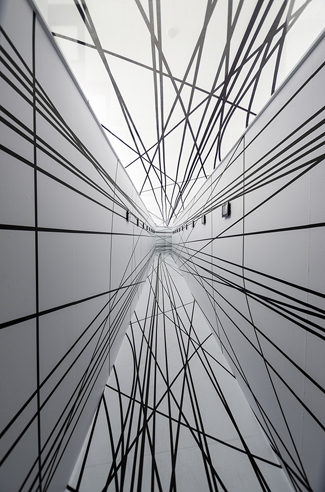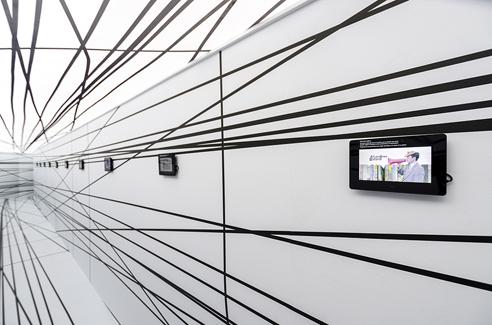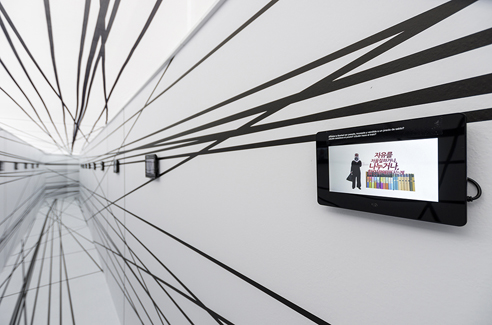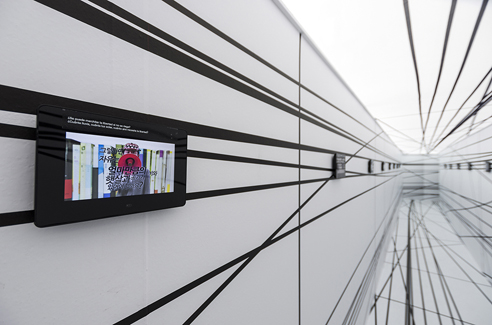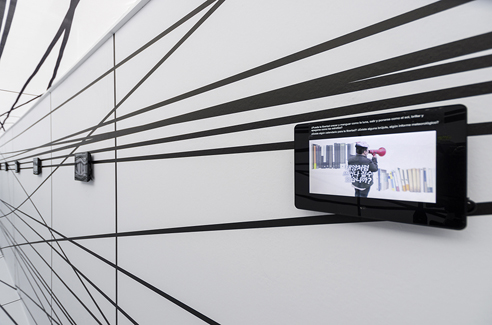Artist: Raqs Media Collective
Raqs Media Collective is a group based in New Delhi, lndia, created in 1992 by Jeebesh Bagchi (1966), Monica Narula (1969) and Shuddhabrata Sengupta (1968). Raqs is a think tank that takes aesthetics as a point of departure for social and political reflection. Their name originally referred both to the Persian, Arabic and Urdu ward for a state of meditation, and to the acronym “Rarely Asked Questions”, RAQs. The collective’s initial interests focused on documentary film, creating films like In the Eye of the Fish (1997), Present lmperfect, Future Tense (1999) and Growing Up (1995). Playing with multiple roles, the collective acts as artists, curators, and, as in their own words, philosophical agents provocateurs. Currently, the collective produces installations and performances, as well as editorial and curatorial projects and educational programs from different disciplines, such as sociology, geography, mathematics, industrial design, and urban planning. Always playing with an imprecise poetics, Raqs Media Collective analyzes the past, thinks the present, and imagines the future.
Artwork: Ask the Person Who Sits Next To You (Pregúntale a la persona que se sienta a tu lado)
Ask the Person Who Sits Next To You features surface modifications to create a long corridor which is interspersed with a series of short videos that encode Raqs’ take on liberty. This work develops motifs initiated during the course of ‘The Auto-Didact’s Transport’ – a public art project undertaken by Raqs for the Gwangju Folly. In Gwangju, Raqs modified the interior of four metro rail carriages in the city’s transit system, and also created scripts for performers to deliver orations to passengers. Here, the modifications (patterns that echo a diagram of the connections between the Raqs Media Collective’s three computers and the world) are adapted to create a cladding for a long corridor in the museum, and videos condensing the performers’ orations are interspersed on both walls of the corridor. The videos feature performers who reference traditional Korean masks on their heads and are armed with a megaphone (of the type that is iconic in images of Korean protest demonstrations).
The work presents Raqs’ performative annotations to the relationship between people and power through a series of questions framed within the orations. This ‘folly’ is inspired by Renaissance Humanist Philosopher Erasmus’ satirical work, In Praise of Folly, which played a very important role in encouraging people to think for themselves.
The Place: Caffarena
Address: Compañia 2614 and Cueto 374
Type of Protection: Typical Zone
Caffarena textile factory, founded in 1920, was first located on 1510 San Pablo Street, then moved to the houses located on 2614 Compañia Street and 374 Cueto.
Blas Caffarena Chiozza, a Genoese who arrived in Chile in 1888, settled first in Iquique and then moved to Antofagasta, then to Arica, and finally returned to his homeland. Between 1917 and 1918 he settled on the East Coast of the United States, testing new weaving machines and studying dyeing with aniline. In 1920 he returned to Santiago with his machine, his wife and seven children, who included Elena Caffarena (1903-2003), a feminist leader who fought to claim the role of women in society.
The Caffarena factory consolidated quickly, contributing to Yungay and giving a small scale industrial neighborhood character. The factory has survived countless crises, positioning itself as a renowned company in the field in Latin America.
